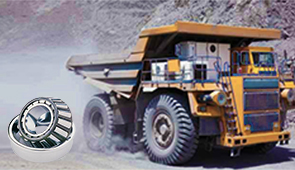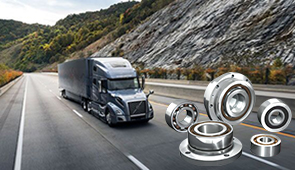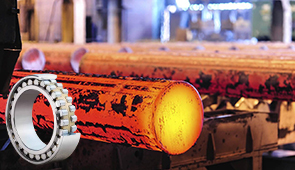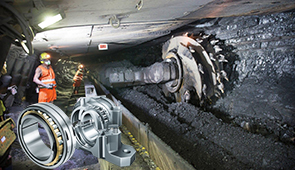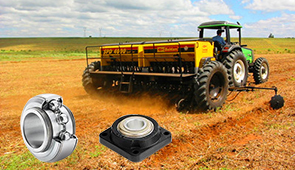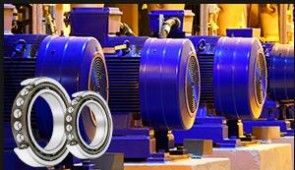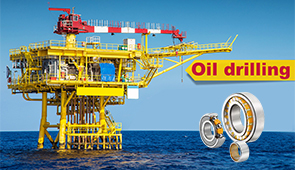Is Grease and Oil the Same Thing? Understanding Lubricants
Lubricants are essential in ensuring the smooth operation of machinery, vehicles, and countless tools and systems we rely on every day. Yet, there’s often confusion when it comes to understanding the differences—and similarities—between grease and oil, two of the most common types of lubricants. Are they interchangeable? How do their properties and uses differ? This article will explore these questions, breaking down the unique characteristics of grease and oil, their specific applications, and how to determine which is best suited for your needs. Whether you’re a professional working with machinery or simply curious about the science of lubrication, this guide will offer you the clarity needed to make informed decisions.
Overview of Grease and Oil as Lubricants

Defining Grease and Oil
Grease and oil are two kinds of lubricants, but seemingly nothing could be more different than their composition, consistency, and applications. Grease is a semi-solid lubricant made by dispersing a thickening agent, usually soap, within a liquid lubricant. The resultant material tends to hold its form under static conditions and can stick to surfaces for a rather long time. Considered much more appropriate for long-term lubrication of wheel bearings, gears, and machinery under heavy loads or harsh environments.
Oil, on the other hand, is a free-flowing liquid lubricant. Florally being less viscous than grease oil mainly consists of base oil, be it petroleum-based or synthetic, along with various additives to improve its performance and provision. Oil suits low-resistance lubrication and heat dissipation systems such as engines, hydraulic systems, and turbines. Its circulation capability through intricate parts helps greatly in lowering wear among high-speed and continuously working machinery.
Ignoring their principal operational differences, however, grease, due to its thick nature, has the property of staying put even when subjected to gravity or centrifugal forces and thus finds application in systems that normally might require infrequent maintenance from hard-to-reach places. On the contrary, oil demands regular checks and refills, but during the process of lubrication of dynamic systems, it greatly cuts down on friction and heat. Selection thus depends on specific factors and constituents of operation, including speed, temperature, load, and how soon maintenance should occur.
Key Differences Between Grease and Oil
The two are lubricants: grease and oil. However, they differ quite sharply in applications and characteristics. Grease is a semi-solid type of lubricant made of base oil with thickening and additive ingredients. Its main advantage is its ability to stay on while subjected to pressure, temperature, or any other external force. Hence, grease finds use in low-speed applications, sealed systems, and areas that require long-term lubrication without frequent maintenance.
On the contrary, oil is a liquid lubricant, the vast majority of which is used in high-speed and high-temperature systems. Oil flows freely to reduce friction and dissipate heat effectively to ensure smooth operation in the dynamic machinery. Oil demands frequent maintenance-monitoring, replenishment, and replacement. Being low viscous, it penetrates tight spaces to provide continuous lubrication for moving parts.
In practice, from an operational point of view, the choice between grease and oil depends on the speed of the system, environmental conditions, intervals for required maintenance, and the nature of the loads involved. Grease is used for static or slow-moving components and when periodic servicing is difficult. Conversely, oil is better for fast-moving parts that need to dissipate heat immediately, along with continuous replenishment.
Common Misconceptions about Lubricants
It is the most common thought that all lubricants work in the same way, regardless of their type. Yet this ignores the specifics in each lubricant made for such as oils, greases, and synthetic blends. For instance, grease tends to stick to components for a longer period, especially under high-pressure and low-speed conditions; oils, on the other hand, tend to be used in precision systems that require fluidity and cooling.
“More is always better” is another misconception. Over-lubrication is as bad as under-lubrication. Excess grease leads to resistance and generates heat; it can also attract contaminants. On the other hand, excess oil can cause leaks or, even worse, lead to poorly developed film strength. The correct application must consider the lubrication points of the system, the manufacturer’s specifications, and the quantity required by the operating conditions.
Finally, it is an accepted notion that lubricants do not degrade. This is a wrong concept because lubricants get thermally broken down, get contaminated, and become oxidized, and when this happens, their performance is compromised. One must keep checking and undertaking maintenance periodically to ensure they remain in good condition. Nowadays, assessments, including oil analysis or grease sampling, can add several levels of confidence in RFCs (replacement of lubricants or modification of lubricating conditions).
Chemical Composition and Properties
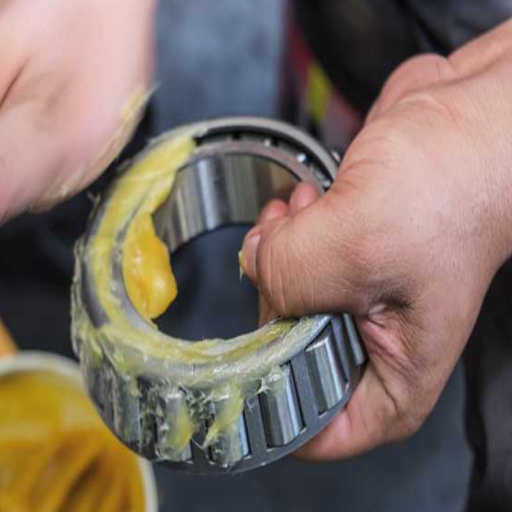
Understanding Grease Composition
Grease is a semisolid lubricant that essentially consists of three components: base oil, thickener, and additives. The base oil forms the greatest portion of the grease, accounting for 70-90% of its mass, depending on the kind of grease, and may be mineral, synthetic, or bio-based. The type of base oil plays an important role in lubrication by forming a fluid film and depending on temperature tolerance. The thickener, called the sponge, imparts the semisolid consistency and is normally derived from metallic soaps such as lithium, calcium, or aluminum complexes, but in some special uses, polyurea thickener can also be employed. Additives are generally 5-10% of the formulation, and they aid the performance of grease by imparting corrosion or oxidation inhibition, extreme pressure protection, and wear resistance.
The chemical compound of the grease directly dictates its functioning and its applicability for different uses. For example, lithium complex greases are popular because they have a high dropping point and water resistance and are mechanically stable, making them suitable for use in various industrial equipment and automotive applications. On the other hand, calcium sulphonate greases are used for applications where superior protection against rust and corrosion is required, even under intense humidity and wetness. Further, synthetic-based greases derived from poly-alpha-olefins (PAOs) or esters ensure higher thermal stability and a wider operating temperature range, which find their application in extreme environments such as aerospace and high-speed machinery.
An in-depth knowledge of grease chemistry in combination with the developments in tribology and lubrication technology will provide the way to optimize grease formulations for ever-increasingly complicated industrial demands. Matching the composition to the requirements of the application is vital for the long life of the equipment, energy efficiency, and minimal maintenance downtime. By keeping these issues in mind, the regular analysis of grease performance has become an integral part of modern maintenance approaches.
Properties of Oils: Mineral vs. Vegetable
Mineral oils are based on petroleum, are non-biodegradable, and are not edible, while vegetable oils are derived from plants, are biodegradable, and many of them are edible.
|
Property |
Mineral Oil |
Vegetable Oil |
|---|---|---|
|
Source |
Petroleum |
Plants (seeds, nuts) |
|
Biodegradability |
Low |
High |
|
Edibility |
Non-edible |
Often edible |
|
Toxicity |
Contains toxic compounds |
Non-toxic |
|
Renewability |
Non-renewable |
Renewable |
|
Applications |
Industrial (lubricants, cosmetics) |
Food, biofuels |
|
Fatty Acids |
Absent |
Present |
|
Environmental Impact |
High pollution risk |
Low pollution risk |
Additives in Grease and Oil
Additives are one of the ingredients in greases and oils and are used to improve their performance and applicability for particular applications. These chemical substances have numerous uses in a variety of conditions, such as raising oxidation resistance, allowing for extreme pressure, or resisting wear where there is so much pressure and stress. Additives commonly found in lubricants consist of:
- AntiWear Additives: Additives like zinc dialkyldithiophosphate (ZDDP) form a chemical film on metal surfaces to prevent metal-on-metal wear in borderline lubrication.
- Extreme Pressure Additives: These additives are derived from sulfur, phosphorus, or chlorine compounds and, under high load, will act as sacrificial films, preventing welding and damage to the surface.
- Anti-Oxidants: Phenolic or amine-based chemicals hinder oxidative degradation of the base oils, thereby extending the application’s useful life.
- Corrosion and Rust Inhibitors: A metal surface can be prevented from corroding in contact with water or acid contaminants using such additives as amine carboxylates.
- Viscosity Modifiers: Polymers keep the lubricant viscosity constant over a wide range of temperatures and operational environments.
- Friction Modifiers: These additives, namely molybdenum disulfide and graphite, reduce friction between sliding surfaces to make energy conversion more efficient and further reduce wear.
More elaborate versions include remotely working detergents, dispersants, and anti-foam agents – all targeted to help specific problems as seen in modern machinery. The evolution of additive packages is set by the complexity of modern industrial systems that require such precision in lubricant design that imposes rigorous performance requirements. Compatibility between additives and base oils must be reviewed so they can synergize and not interact adversely in a way that diminishes lubrication performance.
Types of Grease and Oil
Different Types of Grease: Lithium and Beyond
Due to its all-around performance capabilities, lithium grease is considered a very common choice among greases used for lubrication. It is made by thickening a mineral or synthetic oil with lithium soap to create a grease with superior water resistance, very high thermal stability, and a wide operating temperature range, generally between -20°F and 250°F (-29°C to 121°C). Because of this range of properties, lithium grease fits a wide variety of automotive, industrial, and marine applications, particularly in conventional rolling-element bearings.
Calcium greases excel in water resistance, but temperature resistance is inferior to that of lithium grease. They are generally applied in marine environments or equipment exposed to wet conditions. Meanwhile, aluminum complex greases perform in heavy-duty industrial applications, being exposed to high temperatures and water resistance. Polyurea grease enjoys a long life, especially where life-sealed bearings are found to have no practical way of being re-lubricated.
In recent developments, the introduction of lithium complex grease would mean improvement over the lithium types about operating temperature, now much higher, up to 350°F (177°C) and above. And these greases carry other additives that improve on performance, such as anti-wear and EP additives, to satisfy the requirements imposed by today’s demanding modern machinery used in manufacturing, construction, and energy sectors.
Greases are chosen according to specific requirements of the applications, such as load capacity, thermal resistance, or compatibility with application materials. This variety of formulations dictates the importance of conducting compatibility testing and following manufacturer recommendations to ensure appropriate lubrication performance in any system.
Choosing the Right Type of Lubricant
Choosing the correct lubricant across applications is a multidimensional decision that weighs operational and environmental parameters concerning each use. In effect, such factors as the nature of the machinery, working temperature extremes, load, speed, and environmental contaminants or exposure to which the system might be subjected are considered. To illustrate further, high-speed applications would require low viscosity oils to reduce friction; conversely, heavy load applications require high viscosity or EP oils that do not break down under huge stresses.
Next is thermal stability, which is essential for an environment with high temperatures, where poorly formulated lubricants may oxidize or degrade, resulting in lubrication failure. Other things that need to be verified for compatibility are seal materials, metals, or even other oils or greases currently in use within the system; otherwise, chemical reactions could undermine the validity of the components. Proceeding with the newer technology in lubrication, synthetic and semi-synthetic types produce better resistance to oxidation, film strength, and lifetimes when compared to the base mineral ones.
Another very relevant step to consider is compliance with industry certification and manufacturer recommendations. Parameters such as viscosity, grade (like ISO VG or SAE ratings), and additive packages (anti-wear, corrosion inhibitors, detergents) lend to the assurance that the lubricant fulfils its requirement for the equipment and operational efficiency. Altogether, thorough consideration of these, combined with monitoring of conditions, will ensure optimal performance of machinery and hence reduction in wear as well as the cessation of costly downtime.
Applications of Grease and Oil Across Industries

Automotive Uses of Grease and Oil
Greases and oils are extensively used in the automotive industry for the maintenance of mechanical systems. Without sufficient oil in the engine system, heat may be generated in excess due to friction arising between moving components, which would result in heavy wear. Synthetic motor oils are one example of advanced formulations well-designed to withstand higher operating temperatures and retain viscosity at lower shear rates under demanding conditions. On the contrary, balancing transmission fluids and gear oils is the right choice in delivering power as they work against friction and provide smooth lubrication of components within the drivetrain.
Grease, on the opposite side, is essential for many applications needing heavy-duty long-term lubrication in components subjected to huge loads or hostile environments. Modern lithium-based or synthetic grease usually finds an application in wheel bearings, chassis components, and universal joints because of its strong surface adhesion and water washout resistance. They are mixed with additives such as molybdenum disulfide or polytetrafluoroethylene to carry higher loads and provide wear protection.
The current development innovations focus on improving thermal stability, oxidation resistance, and compatibility for hybrid and electric vehicle systems. These improvements resolve the ever-changing demands of automotive technologies toward higher efficiency and a smaller environmental footprint. Advanced lubrication maintenance practices and perfection of the finest grease shall uphold its reliability in performance.
Manufacturing Applications
Lubricants are crucial in optimizing manufacturing processes as they reduce friction, wear, and heat within industrial machinery. They are used in many other industrial processes to ensure the efficiency of operations, increase the life span of equipment, and render these operations cost-effective. Here are five of the major manufacturing applications of lubricants, listed with a detailed explanation of each and their influence on manufacturing:
- Metalworking fluids: Cutting, grinding, and milling operations require metalworking fluids, which contain cooling and lubricating substances at the point of contact between tools and workpieces. By lowering friction between the surfaces and the tool and the heating generated at the surface, these fluids allow for accurate machining and longer tool life. For example, synthetic metalworking lubricants can assist in cutting accuracy by up to 25%.
- Hydraulic Systems: Hydraulic oils of a special nature are formulated to transmit power, minimize wear, and thermal degradation of hydraulic systems. At high-pressure levels, smooth operations are thus assured for heavy-duty equipment in the construction and manufacturing sectors. Equipment downtime is reduced by around 20% when the lubricants are used in hydraulic systems correctly.
- Gearbox Lubrication: High-performance lubricants used by gearboxes in manufacturing equipment prevent gear wear, reduce noise, and ensure uninterrupted torque transmission. New synthetic gear oils with advanced additive technology improve gearbox efficiency by 15% while maintaining lubrication under extreme temperatures and pressures.
- Compressor Oils: Manufacturers employ compressors that, in turn, rely on lubricants for cooling, sealing, and minimizing wear in the moving parts. High-quality compressor oils that possess superior thermal and oxidative stability improve system efficiency and lengthen maintenance periods, which altogether reduce the cost of manufacturing.
- Conveyor and Chain Lubricants: Conveyors and chains along the production line require special lubricants to protect the components from corrosion, minimize wear, and smoothly facilitate motion. Dry film lubricants in food and beverage manufacturing ensure cleanliness and enhance load-carrying capabilities, which help reduce energy consumption by as much as 10%.
These applications emphasize the extreme need for specially formulated lubricants to satisfy the high demands of modern manufacturing processes, ultimately improving productivity, equipment reliability, and sustainability in operation.
Machinery Maintenance: Best Practices
A robust machinery maintenance program ensures the proper functioning of machinery, its longevity, and operational reliability. Best modern practices emphasize a sometimes-erroneous cocktail of predictive, preventative, and condition-based maintenance philosophies customized to operational needs. Predictive methods use the latest technologies, such as vibration analysis, thermography, and oil analysis, to single out potential failures that might be set in motion at an inconvenient time, thus avoiding unwarranted downtime. Prevention methods develop schedules for periodical inspections and maintenance activities such as salvage, repair, or replacement of components and calibration of systems to work against wear and tear, whereas condition-based monitoring systems employ real-time data acquisition with IoT-enabled sensors to map equipment performance at parameters like temperature, pressure, or rotational speed.
To give maximum maintenance efficiency, the organization must step up and combine training within its staff so that technicians are competent in using testing and diagnostic equipment and interpreting the data generated. Similarly, sustaining a digital maintenance logbook using a computerized maintenance management system (CMMS) will simplify record-keeping and ease the flow of maintenance data for further evaluation and decision-making. Recent results show that preventive and predictive analytics-based frameworks can reduce equipment failures by about 30%, thereby emphasizing the importance of technically augmented maintenance systems under the modern manufacturing landscape.
Lastly, this ensures that the warranty remains valid, along with complying with OEM (Original Equipment Manufacturer) instructions for the procurement of spare parts that standardize compatibility. Moving on to developing a proactive maintenance culture will, in turn, protect machinery performance and keep operational methods sustainable in cutting down energy consumption and extending asset life cycles.
How to Choose the Right Lubricant
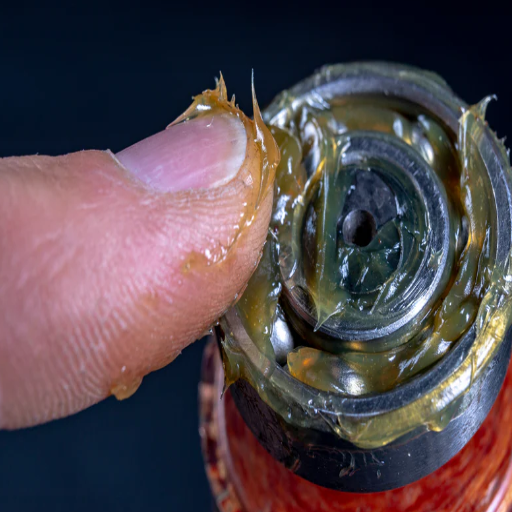
Factors to Consider: Performance and Cost
Careful attention to the selection of a lubricant should be done, regarding both the performance criteria and cost-effectiveness, to provide the best operational efficiency. The performance factors are mainly viscosity, thermal stability, and wear protection, as they influence the proper functioning and damage of the machine. For instance, by selecting a lubricant with the appropriate viscosity index, proper lubrication can be assured at varying temperature conditions, reducing friction and wear. Also, thermal stability aids in maintaining the lubricant’s capabilities in high-temperature applications, as the breakdown in performance will usually cause equipment failure.
Conversely, the decision-makers should consider the purchase prices of the lubricant and the total costs throughout its lifecycle. Some premium lubricants do involve a higher buying price, but owing to longer intervals between servicing, better protection for equipment, and efficiency advantages, these premiums become bargains in the long run. Also, taking the operational environment and load conditions into consideration saves one from buying a lubricant that is too specialized and expensive and, more importantly, ensures the product matches the need.
By evaluating the performance vis-à-vis the cost aspects and applying recent lubrication technology advances in the right places, organizations can improve the reliability of their equipment and reduce total ownership costs, allowing a lucrative return toward operational excellence.
Environmental Conditions and Lubrication Needs
Environmental factors play a major role in the performance and longevity of lubricants in industrial application machinery. Questions of extreme temperatures, humidity, contamination, and operating pressures corrupt the nature of viscosity, thermal stability, and oxidation resistance of the lubricants. A high-temperature environment will require that the lubricant be able to resist thermal degradation and provide film strength at all times to prevent wear on the components. Low-temperature environments require low-viscosity lubricants with pour point depressants so that equipment can operate smoothly without compromising its flow characteristics.
With a high particulate contamination environment, such as in the mining or construction industries, lubricants will need to be compatible with fine filtration and contain antiwear additives to protect critical components from critical components. Similar benefits must be vested in marine or offshore applications to prevent corrosion against saline ingress and moisture.
By applying predictive analytics and testing lubrication performance under differing environmental scenarios, industries can adopt proactive strategies to achieve alignment between lubricant specifications and operational conditions. This approach, if applied effectively, will be instrumental in preventing win-win equipment failure due to improper lubrication, thereby achieving high performance and complying with environmental and industry regulations.
Frequently Asked Questions (FAQ)
Q: Is grease and oil the same thing?
A: No, grease and oil are not the same thing. While both are lubricants used to reduce friction and wear between moving parts, grease is a semi-solid substance that consists of oil mixed with a thickener, whereas oil is typically a liquid. Grease is often used in applications requiring a lubricant that can stay in place, while oil is better suited for situations where a lower viscosity lubricant is needed.
Q: What’s the difference between grease and oil?
A: The primary difference between grease and oil lies in their consistency and application. Grease is a thicker substance, often used to lubricate bearings and other components that require a lubricant to stay in place, especially under high temperatures. Oil, on the other hand, is less viscous and is commonly used in engines as motor oil or lubricating oil, providing a fluid barrier between metal parts.
Q: What type of lubricant is grease?
A: Grease is a type of lubricant that is used to lubricate machinery and equipment. It consists of a base oil mixed with a thickener, which gives it a semi-solid consistency. Common thickeners include soaps, and the lubricating properties can be enhanced with additives for specific applications, such as bearing grease or lithium-based grease.
Q: Can I use grease instead of oil?
A: While grease can sometimes be used in place of oil, it is essential to consider the application. Grease is often used in situations where a lubricant must stay in place, like in wheel bearings or high-temperature environments. For applications that require a more fluid lubricant, such as in engines, oil is the better choice.
Q: What is the viscosity of grease compared to oil?
A: Grease generally has a higher viscosity than oil due to its thickening agents, making it thicker and more resistant to flow. This property allows grease to adhere to surfaces and provide lubrication even under extreme pressures. In contrast, oil is less viscous, allowing it to flow easily through machinery and provide lubrication.
Q: What is lithium grease, and when is it used?
A: Lithium grease is a type of grease that uses lithium soap as a thickener. It is often used for its excellent water resistance and high-temperature performance. Lithium-based grease is commonly used in automotive and industrial applications, such as in wheel bearings and other components that experience metal-to-metal contact.
Q: How do I properly apply grease using a grease gun?
A: To apply grease using a grease gun, ensure the gun is filled with the appropriate type of grease. Insert the nozzle into the grease fitting of the component, and pump the trigger to dispense the grease. It is crucial to apply the right amount of grease to avoid over-lubrication, which can lead to contamination and decreased effectiveness.
Q: Are there food-grade lubricants available that are similar to grease?
A: Yes, there are food-grade lubricants available that are similar to grease. These lubricants are specially formulated to meet safety standards for use in food processing and handling environments. They provide the necessary lubrication while ensuring that they do not pose a risk of contamination.
Q: What are the effects of water on grease and oil?
A: Water can negatively impact both grease and oil. While grease is typically formulated to resist water, prolonged exposure can compromise its consistency and performance. Oil, on the other hand, can become contaminated with water, leading to emulsification that reduces its lubricating properties and can cause rust and corrosion in metal parts.
UCTH213-40J-300 with Setscrew(inch)
CNSORDERNO: Normal-duty(2)
TOGN: UCTH213-40J-300
SDI: B-R1/8
SD: 2 1/2
UCTH212-39J-300 with Setscrew(inch)
CNSORDERNO: Normal-duty(2)
TOGN: UCTH212-39J-300
SDI: B-R1/8
SD: 2 7/16
UCTH212-38J-300 with Setscrew(inch)
CNSORDERNO: Normal-duty(2)
TOGN: UCTH212-38J-300
SDI: B-R1/8
SD: 2 3/8
UCTH212-36J-300 with Setscrew(inch)
CNSORDERNO: Normal-duty(2)
TOGN: UCTH212-36J-300
SDI: B-R1/8
SD: 2 1/4
UCTH211-35J-300 with Setscrew(inch)
CNSORDERNO: Normal-duty(2)
TOGN: UCTH211-35J-300
SDI: B-R1/8
SD: 2 3/16
UCTH211-34J-300 with Setscrew(inch)
CNSORDERNO: Normal-duty(2)
TOGN: UCTH211-34J-300
SDI: B-R1/8
SD: 2 1/8









